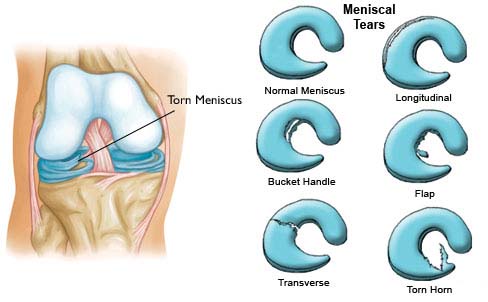Sam Akhavan, MD
Pittsburgh Orthopaedic Sports Medicine Doctor
Arthroscopy Surgeon for Knee & Shoulder Surgery, Pain and Injuries
SHOULDER
ARTHROSCOPY
SURGEON
KNEE
ARTHROSCOPY
SURGEON
6 Signs and Symptoms that you may have a meniscus tear
1. A Recent Injury
If your knee was feeling fine but after suffering an injury (typically a twisting-type of injury with the foot planted), this may be a sign that you have suffered a meniscus tear
2. Knee Swelling
Think of swelling in the knee as if a small pebble fell into your eye. As the pebble would irritate the eye and cause it to be red and tear, a meniscus tear would cause the knee to swell.
This may be especially true if the swelling occurs with activity
3. Knee pain
Orthopaedic Sports Medicine Specialists are trained to differentiate between the various pains in the knee and associate the pain with the responsible injured structure in the knee. In the case of a meniscus tear, the pain will be a the level of the joint line (where the two bone of the knee, the femur and tibia come together). More specifically, the pain will be either on the inner or outer aspect of the knee.
Unfortunately, this type of pain may also be associated with knee arthritis. It is therefore crucial that x-rays be obtained to evaluate the degree of arthritis in the knee
4. Clicking or Popping within the Knee
When the meniscus is torn, it becomes a foreign body within the knee and may interfere with joint motion. If the meniscus gets caught in between the two bones of the knee, it may cause an audible click or pop which may be extremely painful.
5. Locking of the knee
Nothing is more concerning to an orthopedic surgeon evaluating a patient with a meniscus tear than when their knee get locked in a position. This may be an indication that the meniscus tear is large enough that it is getting caught in between the femur and the tibia and is now preventing further knee motion.
Most of the time, if the knee is still locked at the time of evaluation, a surgeon may be able to "unlock" the knee through special maneuvers in clinic to restore knee motion until the meniscus tear can be addresssed surgically. If this cannot be done, urgent surgery (within a couple of days) is typically necessary to restore knee motion.
6. Loss of knee motion
Loss of motion of the knee means that the patient is unable to fully bend or straighten the knee, especially when compared to the opposite knee. It can be a result of many different pathologic processes within the knee (such as osteoarthritis, weakness of muscles surrounding the knee, etc..).
In the case of a meniscus tear, loss of motion is typically a result of either swelling within the knee or due to inabity to fully bend or extend the knee due to the meniscus getting in the way of knee motion.
Meniscus Tear?
Call For an Appointment Today
412-359-8095


